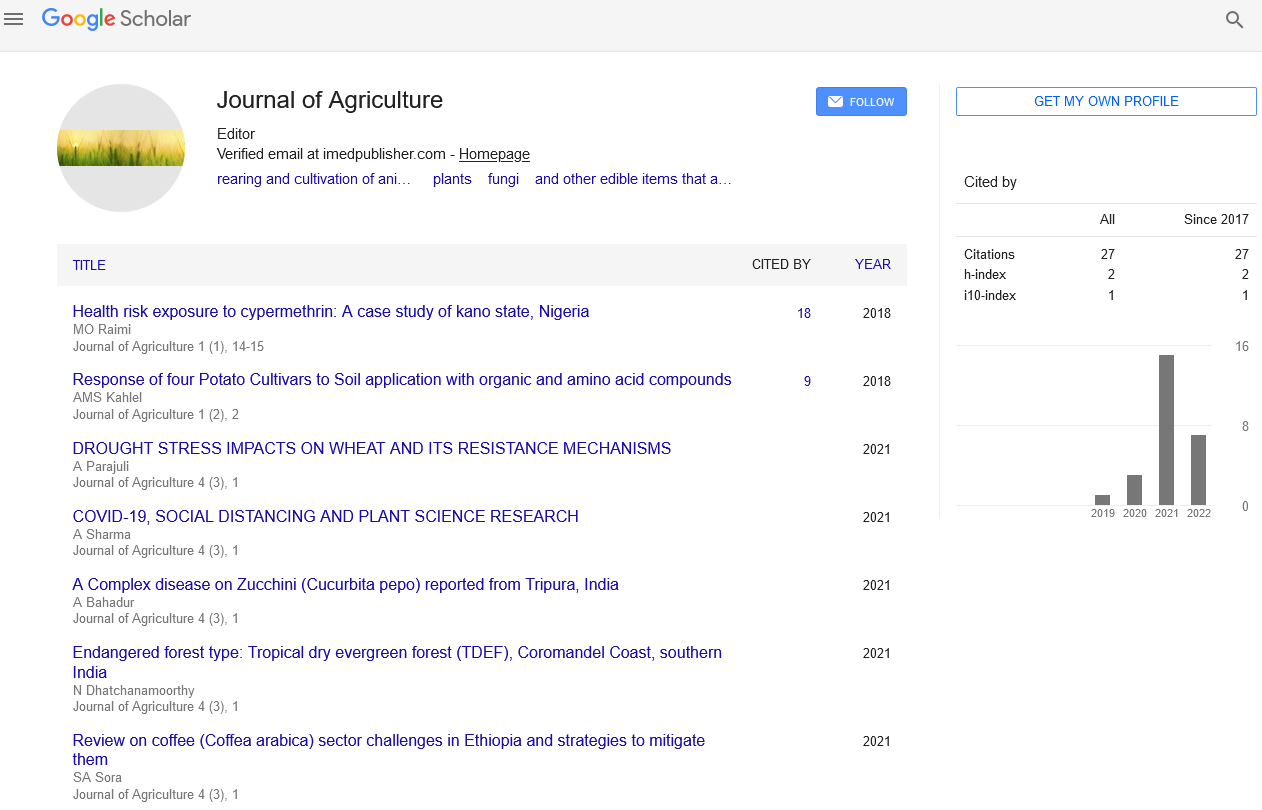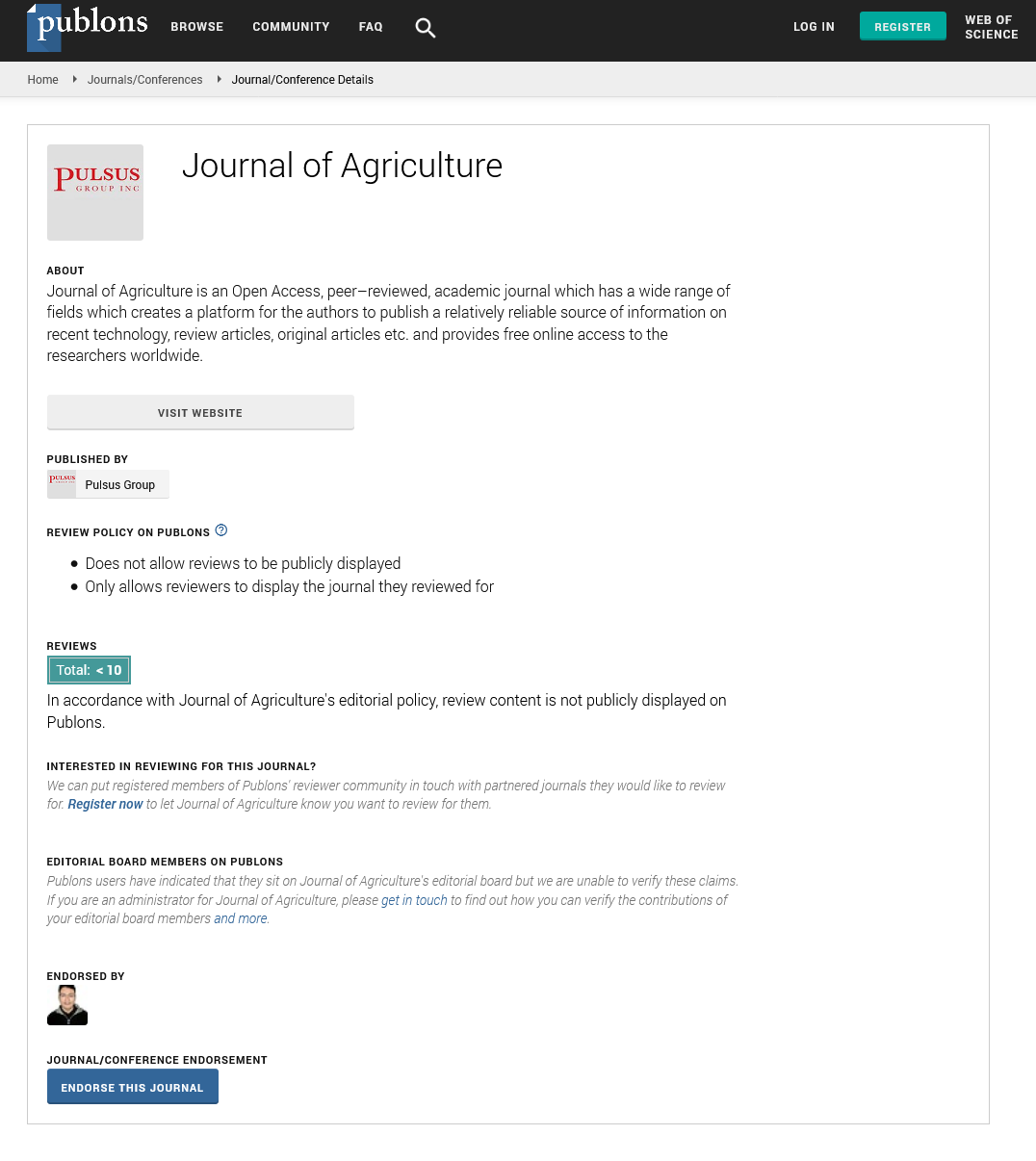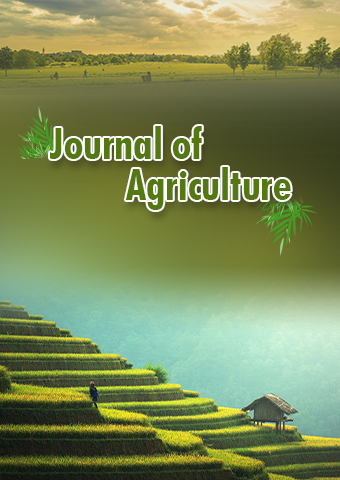Mini Review - Journal of Agriculture (2023) Volume 6, Issue 4
Production Vulnerability, Collective Term for Vegetable Degradation and Mortality
- Corresponding Author:
- Shahi Mulk Department of Agriculture, Balochistan Agriculture University, Balochistan, Pakistan E-mail: shahimulkuet@gmail.com
Received: 23-Jan-2023, Manuscript No. JAGRI-23-87735; Editor assigned: 26-Jan-2023, Pre-QC No. JAGRI-23-87735 (PQ); Reviewed: 10-Feb-2023, QC No. JAGRI-23-87735; Revised: 25-Jul-2023, Manuscript No. JAGRI-23-87735 (R); Published: 01-Aug-2023, DOI: 10.37532/JAGRI.2023.6(4).90-93
Abstract
We are switching to sustainable vegetable production to combat resource waste and pollution. However, knowledge gaps exist regarding key constraints and how to achieve a sustainable vegetable supply. Here, we integrate data on vegetable production and supply in China and use data from the Food and Agriculture Organization (FAO) and the national bureau of statistics to map the current state to the five advanced horticultural countries: The United States, the Netherlands, Greece, compared with Japan and Korea. Projections of vegetable supply in 2030 and 2050 by China and model projections. China’s vegetable supply increased from 592 g person d−1 in 1995 to 1262 g person d−1 in 2018 and remains constant in 2030 and he 2050. Compared to the five countries, the higher supply of vegetables is mainly due to the larger harvested area rather than the higher yield. However, harvested area is projected to decrease by 13.6% and 24.7% in 2030 and 2050, respectively. Instead, vegetable yields are projected to steadily increase by 11.8% and 28.3%, respectively, over this period. A high vegetable supply and preference for vegetables, indicated by a high vegetable-to-meat production ratio, is thought to increase the rate of vegetable loss and wastage, with recommended vegetable intakes cannot be guaranteed. Harvested area will decrease by 37.3% to 67.2% in the 2030 and 2050 waste reduction scenarios. This study shows that sustainable changes in China’s vegetable supply can be achieved by increasing yields and limiting vegetable loss and waste, rather than expanding harvested areas.
Keywords
Dietary pattern • Food loss and waste • Model prediction • Vegetable supply pattern • Food and Agriculture Organization (FAO)
Introduction
China’s vegetable supply has improved significantly, as evidenced by the sharp increase in both the total vegetable supply and the harvested area. As such, China has become the largest producer of vegetables and has the largest per capita supply of vegetables in the world. With rapid economic development, the government and vegetable producers have gradually increased investment in vegetable production to improve farmers’ income, especially as a measure against poverty among smallholder farmers, and to improve the availability of vegetables to improve living standards increased. The expansion of the vegetable industry and the resulting increase in vegetable supply will improve the affordability of vegetables, making it easier to consume vegetables and eat healthier in China compared to other countries [1].
However, the heavy investment in the vegetable industry and the resulting increase in harvested area and delivery volume has led to significant waste of resources and environmental pollution. Significant increases in vegetable supplies have proven to consistently far exceed the vegetable needs of people in a given region, resulting in a large drop in vegetable prices and severe vegetable losses and losses. Discarding is occurring. Additionally, some smallholder farmers with little experience growing and selling vegetables prefer to take advantage of government investments to start growing vegetables. However, in the long run, they fail to manage facilities and soils properly, leaving land and facilities to be disposed of. Regarding pollution, vegetable cultivation has been shown to increase greenhouse gas emissions, non-point source pollution, groundwater pollution, and reduce nutrient utilization efficiency. Therefore, the dramatic expansion of vegetable acreage continues to threaten the environment of agro ecosystems [2].
Therefore, changes are urgently needed in China to ensure a resource-saving and environmentally friendly system for sustainable vegetable supply. Vegetables still exist, and it is unclear how concrete steps can be taken to facilitate a sustainable transition for China’s vegetable supply. This study aims to fully understand the current situation of vegetable supply, compare it with horticultural advanced countries in vegetable supply, and predict the future of vegetable supply in China. We believe this knowledge will definitely improve our understanding of sustainable management of vegetable agriculture in China. In addition, it supports policy-making and governments for vegetable farmers, especially small farmers, in the future successful management of vegetable farms.
Literature Review
Parameter Definition
The definition of vegetables follows the Food and Agriculture Organization (FAO), but excludes tubers, potatoes, non-green legumes and legumes. Vegetables grown primarily for fodder or seed are also excluded. The definition of vegetable supply is the change in exports and inventories minus vegetable production and imports. The vegetable intake in this study is the intake of fresh vegetables, ignoring many small amounts of processed vegetables. Tomato juice or dehydrated vegetables. We define the vegetable loss to waste ratio as the ratio of vegetable intake minus vegetable intake. The vegetable loss and waste definition is consistent with the FAO definition of food (vegetable) loss and waste. Vegetable loss refers to the quantity or reduction in quantity of vegetables by food suppliers during the stages of production, post-harvest, storage and processing, excluding retailers, food service providers and consumers. Vegetable waste refers to the amount or quantity of vegetables discarded by retailers, food service providers and consumers during the stages of distribution, retail and consumption. Vegetable losses and waste may therefore include harvest, post-harvest and storage waste, field to market transport and processing waste, vegetable preparation waste in the kitchen, and leftover vegetables on the table. Data on vegetable consumption, excluding fresh vegetables, for example, processed and dehydrated vegetables were not available and are therefore not included in the current formula despite a small portion. The ratio of vegetable loss to waste may be somewhat overestimated. Define the vegetable-to-meat ratio as the ratio of vegetable servings to meat and fish servings to indicate the customer’s vegetable preference [3].
Results
Compared with other five advanced horticultural countries, China had the lowest vegetable yield and GDP as indicators of low customer income and low horticultural technology. However, China’s vegetable supply, harvested area per capita and per country, and share of vegetable meat were the highest in the last 20 years. China’s per capita and per her country vegetable supply and harvested area have increased steadily over the past 40 years, but the rate of increase has slowed since 2015. In contrast, these parameters have remained constant or decreased to some extent in other her 50-year countries. Similarly, the vegetable to meat ratio has declined in South Korea and Greece, but has remained constant over the past 30 years in the United States, Japan, and the Netherlands. Year on year yield increases have been consistently observed in all six countries, although yields in Japan and Korea have risen more slowly or even declined over the past decade. Compared with the United States, the Netherlands, and Japan, China’s vegetable supply, per capita harvested area, and vegetable to meat ratio from 1985 to 2005 were close to those of Korea and Greece. This generally indicates a similarity in vegetable preferences between China, Korea and Greece [4].
Discussion
Yield structured vegetable supply
Our research shows that China is moving from area-based to yield-based vegetable harvesting. Compared with five other advanced horticultural countries, China’s harvested area per capita or per country is large, but the low yield of vegetables means that by expanding the harvested area beyond the yield before 2018, it shows that high vegetable supply was achieved. This conclusion is supported by a close linear correlation between vegetable supply and her per capita harvested area. However, since 2003 this situation has gradually changed, as evidenced by a slight increase in harvested area per capita and an increase in yields. Based on our model projections, in 2030 and 2050, the contribution of vegetable yields to vegetable supply will increase, and the percentage of harvested area per capita will decrease by 13.6% and 24.7%, respectively [5]. Vegetable farms in China are generally concentrated in specific regions such as North China and the Bohai Rim, accounting for about 30% of China’s vegetable harvesting area. This intensive vegetable cultivation facilitates the advanced techniques that are increasingly invested and used in vegetable production, thereby improving vegetable yields. This strategy has been successful in other horticultural countries in Italy and in Almeria, Spain. In this case, the area harvested will gradually shrink, leading to a more technically oriented and manageable horticultural enterprise that can be expected to be resource efficient and environmentally friendly.
Vegetable loss and waste
On the other hand, the increased supply of vegetables did not encourage vegetable consumption in China. Our results show that before 2002, vegetable intake increased with increased vegetable supply, whereas after 2002, vegetable intake decreased despite increased vegetable supply. A high proportion (79%) indicated that vegetable loss and waste rates are increasing as vegetable supplies increase in various countries around the world. Based on their data, we calculated that the vegetable loss and waste rate in China in 2018 was 18%, which supports our study. This result was confirmed by another study, which showed that the loss and wastage rate of whole vegetables and fruits in China is around 50%. Since vegetables are more likely to be wasted than fruits, especially leafy greens, we would expect a similar rate of vegetable loss and wastage from the results. Vegetable producers and policy makers support increasing vegetable harvest area, so increasing vegetable supply is less effective in motivating vegetable consumption than increasing vegetable loss and waste. This is undoubtedly a tragedy, but the availability of vegetables in China has made them more affordable [6]. We speculate that urban lifestyles are increasing vegetable loss and waste and changing the vegetable supply system. First, older people prefer or become accustomed to a plant based diet, while younger generations prefer more meat, thus reducing vegetable loss and waste in the kitchen, especially when older people cook plant-based foods. In addition, the culture of social interaction in restaurants, the serving of large meals, the serving vegetable dishes at the end of meals in China and the growing number of small families All increase vegetable loss and waste to some extent. If they can’t find one, they prefer to engage in vegetable production.
Conclusion
The study showed that China’s vegetable supply increased gradually from 592 g per person per day in 1995 to 1,262 g per person per day in 2018 and is expected to remain constant in the future rice field. A greater supply of vegetables was achieved by having more harvested area than yield compared to today’s technologically advanced countries. In 2030 and 2050, the harvested area is expected to decrease due to the increase in vegetable yields. However, the larger the supply of vegetables, the greater the inability to ensure adequate vegetable intake and the higher rate of vegetable loss and wastage. Harvested area could decrease by 37%-67%, as projected in 2030 and 2050, due to reduced vegetable loss and waste. The projected reduction in harvested area will help transform vegetable supply systems to be more resource efficient and environmentally friendly. The study warns policy makers to avoid reckless steps to increase acreage for vegetable production in China. Due to the current shortage of vegetable intake, there is a need to take practical steps to change urban dietary patterns or improve vegetable supply chains towards more sustainable vegetable production.
References
- Adger WN. Social vulnerability to climate change and extremes in coastal Vietnam. World dev. 27, 249-269 (1999).
- Johnson IT. Glucosinolates in the human diet. Bioavailability and implications for health. Phytochem Rev. 1, 183-188 (2002).
- Jenny JP, Anneville O, Arnaud F et al. Scientists’ warning to humanity: Rapid degradation of the world’s large lakes. J Great Lakes Res. 46, 686-702 (2020).
- Fu Y, Chen J, Guo H et al. Agrobiodiversity loss and livelihood vulnerability as a consequence of converting from subsistence farming systems to commercial plantation dominated systems in Xishuangbanna, Yunnan, China: A household level analysis. Land Degrad Dev. 21, 274-284 (2010).
- van Ginkel M, Sayer J, Sinclair F et al. An integrated agro-ecosystem and livelihood systems approach for the poor and vulnerable in dry areas. Food Secur. 5, 751-767 (2013).
- Jianchu X, Fox J, Vogler JB et al. Land use and land cover change and farmer vulnerability in Xishuangbanna prefecture in southwestern China. Environ Manage. 36, 404-413 (2005).


